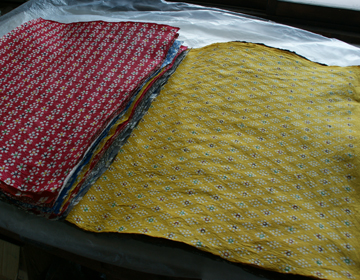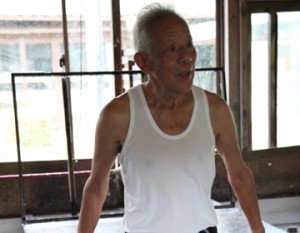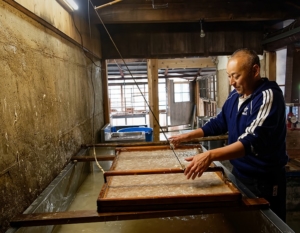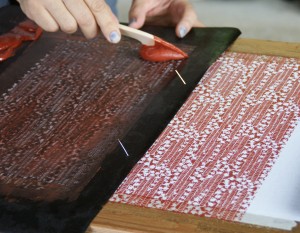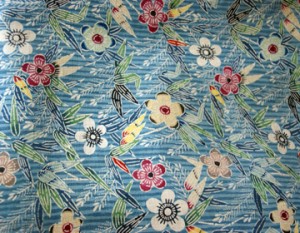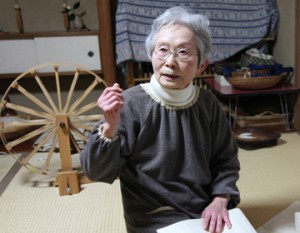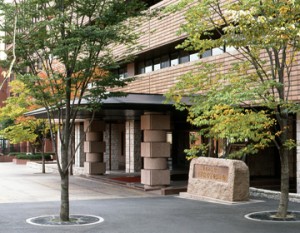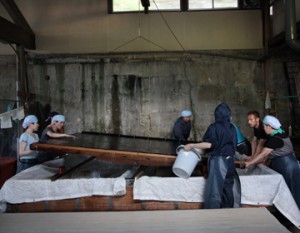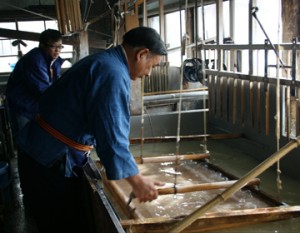“Washi”(Japanese paper) Associated with Toyama Medicine Sellers
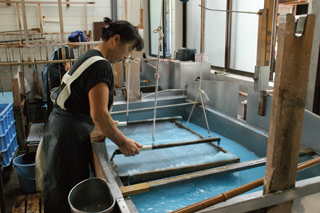
Toyama-city is very often associated with the Toyama medicine sellers. Manufacturing and retailing of medicine started in the Edo period in Toyama. At the same time, manufacturing of Yao ”washi” paper began to strive, as medicine these days were wrapped in paper wrappers or paper bags. If you regress more in time, there are records of ”Ecchu paper” in old writings such as ”Shosoin Monjo” from the Nara period or the ”Engishiki” from the Heian period. The features of ”washi” are that they are strong and tear-resistant. It was thus valued and was used for the making of umbrellas, paper screens, and paper lanterns.
Making Kata dyeing Paper
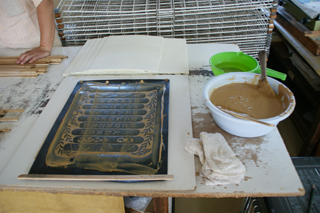
We visited ”KEIJUSHA” this time, where vivid colored ”Katasomegami dyed paper” are manufactured. Yasuki Yoshida of KEIJUSHA explains, ”Katagami paper is dyed with persimmon tannin which is called shibugami.” Nakata recognized shibugami as he had seen it before on his trip to Mie prefecture when he visited ”Ise kata paper”. ”Katasomegami dyed paper” uses kata gami and dye-repellant glue to draw designs, all done by hand. When we visited the workshop, they were using calendar design molds to apply the dye-repellant glue onto the ”washi”.
Yao ”washi” paper in Multiple Colors

KEIJUSHA utilizes the durability of the paper and makes wallets, bags, cushions, etc. Nakata suggests to Yoshida that if thickness of paper can be adjusted and if water-proof processing can be done, perhaps they can be made into table cloths and luncheon mats. The discussion continued on about how Japanese washi paper can further be adopted into daily life. In the present, there are hardly any traditional ”Kata Somegami” dyed paper manufacturers left. ”KEIJUSHA” still continues to create Yao ”washi” paper, in the same way as in the past.



